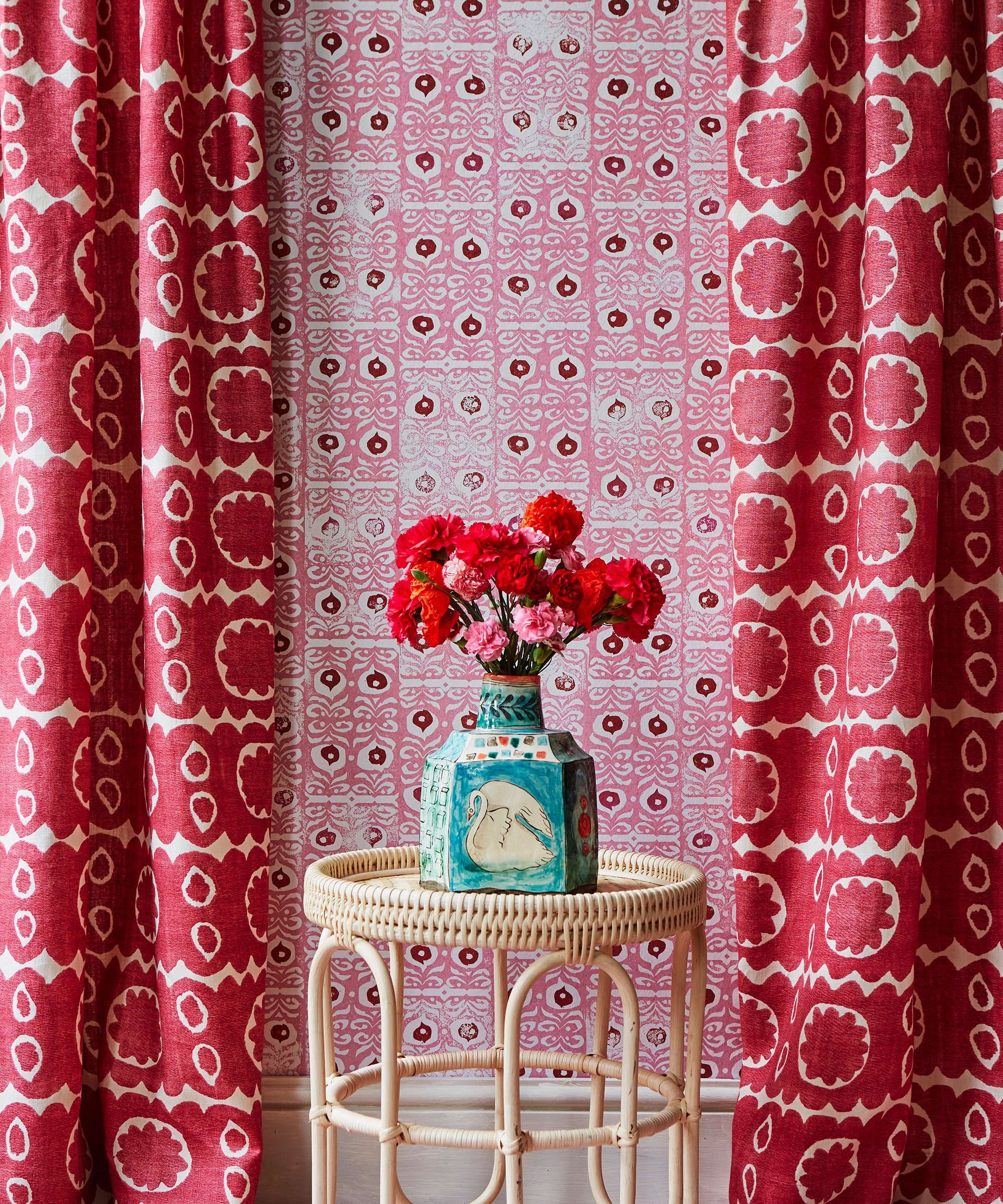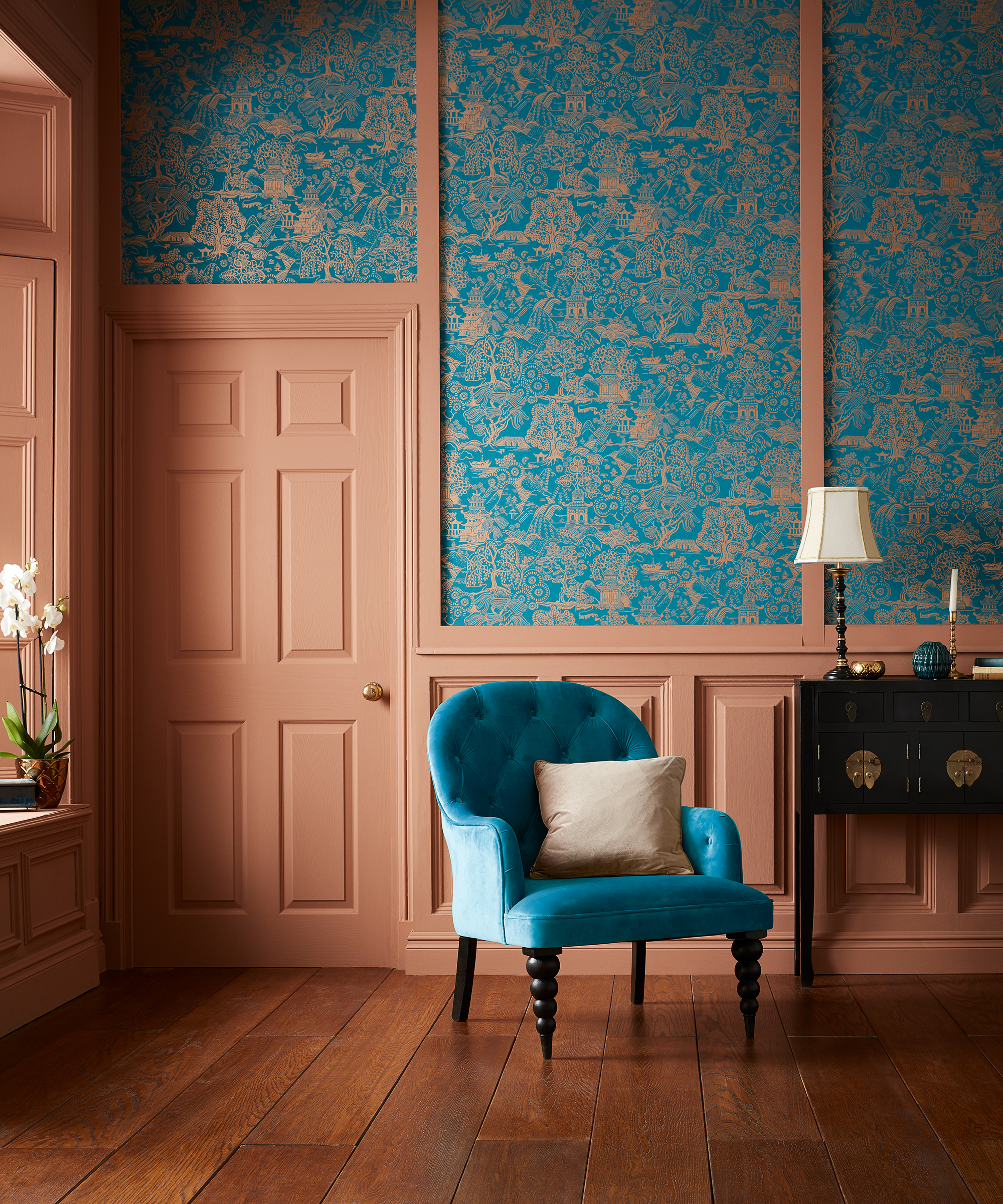How to wallpaper a room – expert advice for how to hang wallpaper
Follow our step-by-step guide to how to wallpaper a room, including expert tips and the best ways to prepare walls, so you can hang wallpaper to perfection


Our guide on how to wallpaper a room will help you achieve the best finish for your scheme, whether you are using wallpaper to create a feature wall or cover an entire room. It has the ability to take an ordinary wall and transform it into a work of art.
Wallpaper can be used all over the home to add visual interest to any room. From lining a feature wall to making a statement on the ceiling, the sky's the limit when it comes to how creative you can be, and removing wallpaper first if necessary can be a straightforward task.
If you are new to wallpaper, the downstairs bathroom is one of the best rooms to flex your creativity. ‘It’s often a small, functional room with often perfect untouched walls tucked below the stairs and out of sight,’ explains Nina Tarnowski, creative director and founder of Woodchip & Magnolia. ‘For me, that makes bathroom walls the ideal place to be brave and a little bit wild with pattern.’
Once you’ve completed the task of measuring for wallpaper, and you have your wallpaper ready to go, use these tips from industry experts to make sure your wallpaper ideas look the part.
How to wallpaper a room

There are two main types of wallpaper – paste-the-wall wallpaper and paste-the-paper wallpaper. Note that you can also apply peel and stick wallpaper if you don’t want to commit to a design, but we’ll concentrate on wallpaper you’re hanging for the long term here.
If you are new to wallpapering, we would suggest starting with paste-the-wall wallpaper as it is less fiddly.
The step-by-step below will demonstrate just how easy the process is.
Design expertise in your inbox – from inspiring decorating ideas and beautiful celebrity homes to practical gardening advice and shopping round-ups.
The tools you’ll need:
- Your chosen wallpaper
- Paste
- To prepare the walls for wallpaper you will need:
- wall filler
- sandpaper
- sugar soap
- lining paper
- For laying the wallpaper, you will need:
- a pair of wallpaper scissors
- a bucket
- spirit level
- tape measure
- roller
- roller tray
- paint brush
- wallpaper brush
1. Prepare the wall

- First file and sand any cracks and imperfections before cleaning the wall with sugar soap. This is especially important if wallpapering textured walls.
- If you are wallpapering over fresh plaster, you will need to ‘size’ the wall as well before wallpapering. This simply means applying a diluted solution of paste to the walls.
- Finish the preparation by applying lining paper. Allow to dry completely before moving onto the next step.
Preparing the wall is one of the most crucial wallpapering tips, ensuring a smooth finish. So while the above steps may seem tiresome when planning how to wallpaper your room, missing them out may spoil the look of your walls.
2. Draw a plumb line

Your next task is to draw a plumb line.
Make sure your first piece of wallpaper, also known as a ‘drop’ of wallpaper, is hung straight.
- Start by making a pencil mark on the wall 50 cm from the left-hand corner.
- Then using a spirit level, draw a vertical straight line – this is your plumb line.
3. Apply wallpaper paste

- Apply the paste directly to the wall using a roller.
- Make sure you apply the paste a couple of centimeters wider than the wallpaper.
- Use a paint brush to paste the top of the wall, skirting board and around sockets.
4. Apply the wallpaper

- Cut the wallpaper to the correct lengths, allowing an extra 2 to 3 centimeters at the top.
- Lightly brush the paper into place as you work from top to bottom.
- Check that you are happy with the position of the wallpaper, and it is lined up with the plumb line.
- Brush the paper down with a smoothing brush from the center to the edges.
If you find when you get to the bottom that there are any bubbles or mismatches, loosely pull the paper back and brush it back down. Repeat until you have finished.
If you choose to use paste-the-paper wallpaper, apply a generous coat of paste to the paper working from the centre outwards before positioning it on the wall.
Bear in mind that wallpapering around a window and wallpapering a corner will be necessary for decorating a whole room rather than a feature wall.

What surface is needed for wallpapering?
When planning how to wallpaper your room, the ideal surface needed is one that is sound, clean and dry. Remove old wallpaper or flaking paint before starting any work, and fill in any cracks or holes.
‘For the best possible finish we recommend that walls are horizontally cross lined with a good quality, medium to heavyweight lining paper (1200 - 1400 grade) and allowed to dry for a minimum of 12 hours,’ adds Charlotte Cosby, Head of Creative at Farrow & Ball.
Of course, wallpapering a ceiling is also possible with good preparation equally vital.

Where do you start when hanging wallpaper?
Your first drop of wallpaper will usually be hung 50 cm from the left-hand corner of a wall.
When choosing which wall to start on, Victoria Ceraudo, co-founder at Ceraudo wallpaper, suggests starting in an area that is relatively well hidden, for example behind a wardrobe if you're planning bedroom wallpaper ideas, or behind a door for living room wallpaper or hallway wallpaper.
‘As this will be your first drop, it will also be the line of paper that your last drop will have to meet,’ explains Victoria. ‘There is no guarantee they will match up perfectly. So it is best for it to be somewhere relatively inconspicuous if possible.’

Why are batch numbers on wallpaper important?
Color and pattern can vary between different wallpaper batches. Batch numbers work like a registration system, indicating which rolls of wallpaper come from the same batch.
Batch numbers are important if you are hoping to achieve a uniform look with your wallpaper, particularly if you are using wallpaper designs for impact. However, if you choose a wallpaper brand that prints to order instead of in batches, this is something you don’t need to worry about.

Is it better to paste the wall or the wallpaper?
When deciding how to wallpaper a room, whether you paste the wall or the wallpaper will depend on the type of wallpaper you choose.
Paste-the-wall wallpaper is a relatively new innovation that has been embraced by many wallpaper brands because it is easy to use and quicker to apply.
However, many brands still produce paste-the-paper wallpaper. To get the best finish, always refer to the manufacturer's instructions.
‘It is best to paste the wall with non-woven paper and paste the paper for vinyl wallpaper,’ explains Nicola Brumfitt, Marketing Director at Prestigious Textiles, as a guide.

Can wallpaper ruin your walls?
‘It is a bit of an urban myth that hanging wallpaper on perfect plaster will spoil the wall,’ explains Abby Hesketh, Product Manager at Graham & Brown.
‘Modern paste-the-wall wallpapers can actually be removed in a single piece, which leaves the surface in excellent condition for the next design.’ This is especially useful for children's bedroom wallpaper that may need replacing more regularly as they grow up.
However, removing wallpaper can cause some damage if your walls were not in a good condition to start with. To avoid any damage, fill in any holes in the plaster with a good filler, and treat any damp on the walls prior to applying wallpaper.

Rebecca has been working as a homes and interiors journalist for over four years. She first discovered her love of interiors while interning at Harper's Bazaar and Town & Country during my Masters in Magazine Journalism at City, University of London. After graduating she started out as a feature writer for Women's Weekly magazines, before shifting over to online journalism and joining the Ideal Home digital team covering news and features. She is passionate about shopping for well-crafted home decor and sourcing second-hand antique furniture where possible.